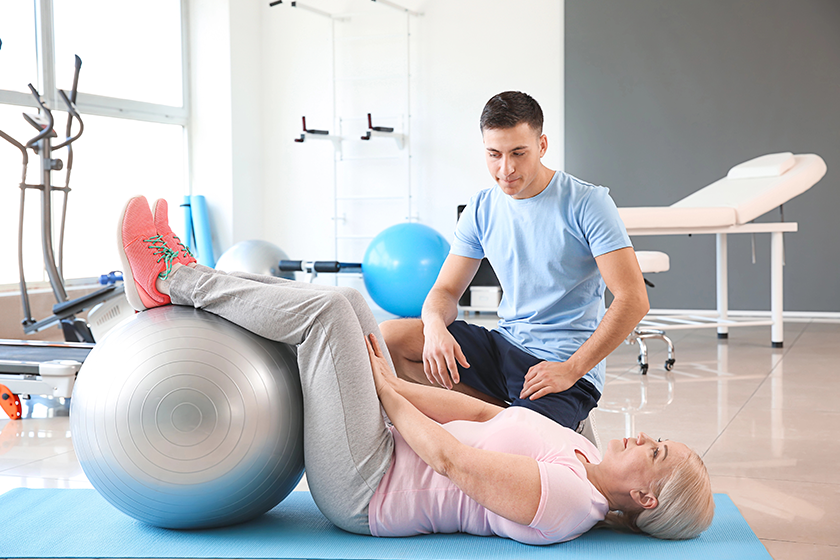3 Types Of Physical Therapy For Elderly And Their Benefits

Maintaining mobility and independence becomes increasingly vital as we age, making physical therapy for elderly individuals an essential part of senior healthcare. Tailored physical therapy programs can significantly improve life quality, addressing everything from balance issues to chronic pain. This specialized approach helps seniors maintain their independence for longer, enjoy a better quality of life, and reduce risks associated with falls and injuries.
At our personal care community, we understand how crucial personalized care is. We integrate physical therapy programs designed to meet the unique needs of our residents. This commitment ensures that every individual enjoys optimal health and wellness benefits, supporting both physical and mental health in a supportive environment.
Balance Training Programs Reduce Fall Risk and Enhance Stability for Elders
Balance training programs are carefully designed to mitigate the risk of falls, a common concern among the elderly. These programs focus on improving stability and coordination, thereby boosting confidence in daily activities. By participating in balance exercises, elders not only enhance their physical stability but also gain a sense of independence that enriches their everyday life.
The benefits of balance training are far-reaching, extending beyond fall prevention to encompass overall health improvement. As balance improves, so does posture and joint mobility, further reducing the likelihood of injury. This makes balance training an essential component of physical therapy for the elderly, fostering a safer and more active lifestyle.
Strength and Conditioning Exercises Boost Muscle Health in Older Adults
Strength and conditioning exercises are pivotal in maintaining muscle health, improving endurance, and enhancing overall physical capacity in older adults. These exercises are structured to counteract the natural decline in muscle mass and strength that comes with aging. By incorporating regular strength training into their routine, elders can experience significant gains in functionality and independence.
Beyond the immediate enhancement of muscle strength, these exercises play a crucial role in managing chronic conditions such as arthritis and osteoporosis. Regular engagement in strength and conditioning routines can alleviate symptoms, improve joint function, and even slow disease progression. This proactive approach to health not only boosts physical capabilities but also uplifts spirits by fostering a sense of achievement and well-being.
Manual Therapy Techniques Ease Chronic Pain and Increase Range of Motion
Manual therapy encompasses a range of techniques aimed at relieving chronic pain and improving range of motion. Through hands-on manipulations and movements, therapists assist in reducing stiffness, enhancing mobility, and promoting tissue healing. This tailored approach addresses specific areas of discomfort, offering targeted relief and improved function.
One of the major advantages of manual therapy is its ability to provide immediate pain relief, making daily activities more manageable and enjoyable. Furthermore, by improving flexibility and range of motion, manual therapy supports the execution of daily tasks with greater ease, thereby improving the quality of life for elderly patients. This form of physical therapy serves as a cornerstone in holistic senior care, emphasizing the importance of individualized treatment for achieving optimal health outcomes.
Elevating Senior Health and Happiness Through Therapy
Our community embraces the full spectrum of physical therapy for elderly residents, making these services a cornerstone of our care philosophy. By prioritizing physical well-being, we empower our residents to lead more active, fulfilled lives, reinforcing our mission to support every aspect of senior health within a vibrant and caring community.
